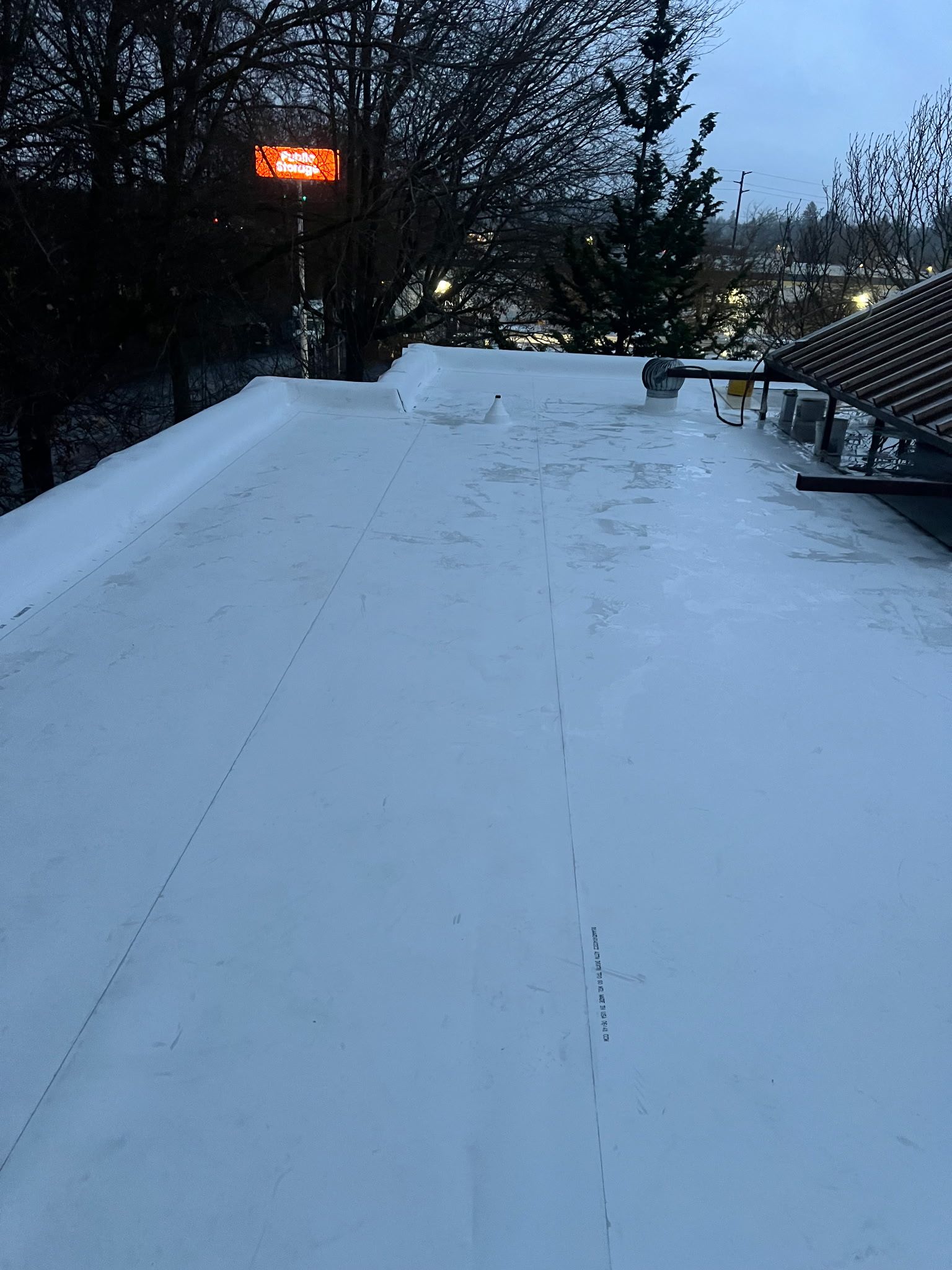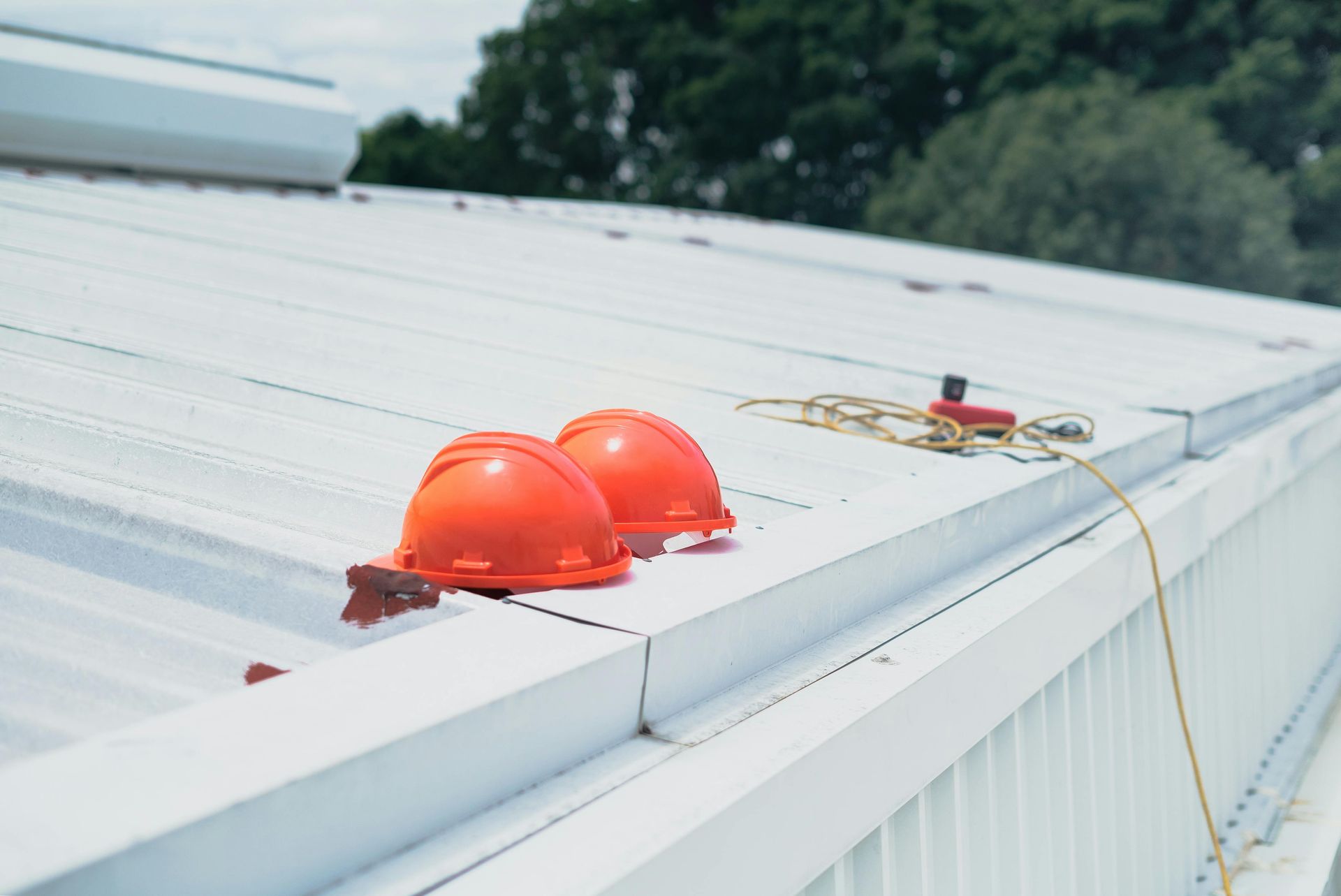Commercial Roof Replacement Guidlines
What Every Building Owner in Portland Should Know
A commercial roof replacement is one of the most significant capital investments you'll make in your property’s lifetime. Whether your roof is leaking, sagging, or just reaching the end of its service life, making the right decisions upfront can save you from budget overruns, downtime, and surprise headaches later. Here’s a comprehensive, no-fluff guide to help you navigate a commercial roof replacement with confidence.
1. Know When Replacement Is Better Than Repair
Not every roof problem requires a full tear-off. But certain red flags point to a replacement being the smarter (and more cost-effective) long-term option:
- Frequent leaks in multiple areas
- Visible membrane damage or bubbling
- Ponding water that won’t drain
- Sagging or structural issues
- Energy bills creeping up from poor insulation
- Roof age exceeding material life expectancy (typically 20–30 years)
If you’re calling for repairs more than twice a year, it’s probably time to stop patching and start planning out your next roof.
2. Choose the Right Roofing System
Different commercial buildings call for different roofing systems. Choosing the wrong material could mean shorter lifespan, more maintenance, and higher energy costs. A good contractor will walk you through your best options based on your roof size, slope, drainage, and budget.
Here are a few common choices:
- TPO (Thermoplastic Polyolefin): Lightweight, reflective, energy-efficient — great for flat roofs.
- EPDM (Rubber): Extremely durable, especially in Portland’s variable climate.
- PVC (Polyvinyl Chloride): Resistant to chemicals, grease, and fire — ideal for restaurants or industrial buildings.
- Metal Roofing: Longer lifespan and excellent durability, but higher upfront cost.
- Modified Bitumen: A solid option for buildings with heavy foot traffic on the roof.
3. Understand the Replacement Process
Here’s what you can typically expect during a commercial roof replacement project:
- Inspection & Consultation – Assess the current roof condition, measure scope, and discuss needs.
- Tear-Off (if needed) – Remove old materials down to the deck.
- Decking Repairs – Replace or reinforce damaged structural elements.
- Installation of Insulation & Vapor Barriers – Improve energy efficiency and prevent moisture issues.
- Membrane or Material Installation – Secure the new roofing system.
- Final Sealing & Flashing Work – Prevent leaks around edges and penetrations.
- Clean-Up & Final Inspection – Ensure everything is watertight and debris-free.
Depending on the size and complexity, the job can take anywhere from a few days to a couple of weeks. Good contractors will minimize disruption to your operations and keep you in the loop at every stage.
4. Plan for Permits & Code Compliance
In Portland, commercial roofing projects must comply with city codes and energy efficiency standards. A reputable contractor will handle all permitting, code inspections, and compliance with Oregon's energy code requirements — including insulation and solar readiness in some cases. Never hire someone who asks you to “skip the permit” because it’s a bright red flag that could cost you a lot more than a permit will later on down the line.
5. Budget for the Full Picture
Roof replacement is a big-ticket project. Typical costs range from $6 to $12 per square foot depending on materials, accessibility, and complexity. Be sure your budget accounts for:
- Removal and disposal of old materials
- Decking repairs (sometimes hidden until tear-off)
- Insulation upgrades
- Drainage solutions or slope correction
- Warranty upgrades (worth it)
- Business interruption mitigation (if needed)
A detailed estimate with line-item breakdowns is a must. Don’t accept vague bids or handshakes.
6. Don’t Skip the Warranty
You’re spending serious money—make sure it’s protected. There are two types of warranties to understand:
- Manufacturer’s Warranty – Covers the roofing materials, typically 10–30 years.
- Workmanship Warranty – Covers the contractor’s labor, often 1–5 years (but great contractors offer more).
Ask for documentation and make sure it includes clear conditions and responsibilities.
7. Schedule Maintenance From Day One
Even a brand-new roof needs regular care. Schedule annual inspections to catch small issues before they grow. Some warranties even require it. Also, keep a roof log: record who did what, when, and why. It’s invaluable for future planning or resale value.
Final Thoughts
Replacing your commercial roof isn’t just about slapping on new material—it’s about making a smart investment that protects your property, your people, and your bottom line for decades to come. With the right plan, the right material, and the right team, you can turn a stressful capital expense into long-term peace of mind.

